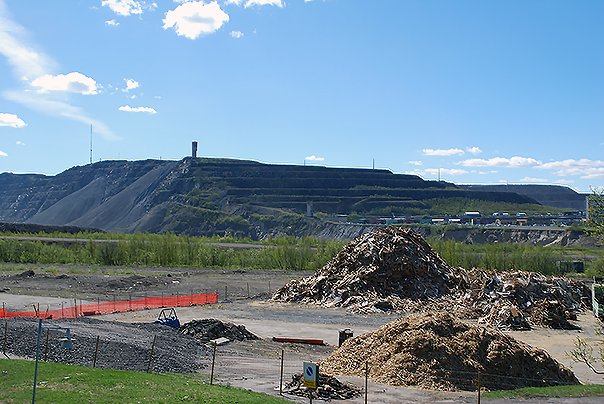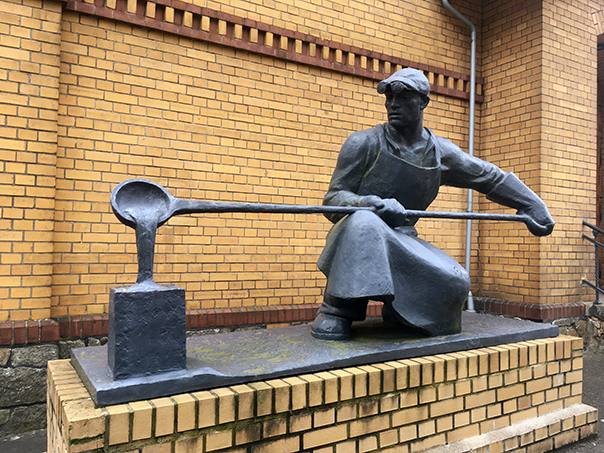
The main focus of ACORE is the agency of change in old industrial regions. This is important because many old industrial regions in Europe have been „left behind“ and became places of discontent. To address these issues, we need a better understanding of regional development, formation of new development paths, and the role of human agency in development path creation. We study cases in the East and the West to reflect on the diversity of Europe and to bridge the existing divides. These cases show the diversity of regional challenge in Europe. In spite of such diversity, there is something in common in these cases. All studied places face the challenge of creating a new path into the future. This can happen when local actors mobilise ideas, resources, and support across various economic and political networks. Often, agents of change have to act against various structural, institutional, and cultural legacies to create new perspectives and shared visions of future. The ACORE team would like to share our ideas and findings.

Dĕčín and Teplice, Czechia
Jan Píša and Vladan Hruška (Jan Evangelista Purkyně University in Ústí nad Labem, Czechia):
“In this research we observe how important is the former industrial orientation and the degree of its diversity. Two case study towns, Dĕčín and Teplice, seem to be quite successful in the re-orientation of their development paths. Traditional industries have adapted successfully to the conditions of global competition. Some local firms became the leaders on the national or international markets. We also observe significant growth in the services sector, accompanied by the recovery of industrial and cultural heritage sites. Successfully revived and newly established firms as well as other non-economic agents of change are sometimes strongly embedded in their place and in addition to their own interests, they make a substantial contribution to local development. In other case study towns, the picture is different as changes are based rather on weakly coordinated agencies of individuals. These differences can be explained by a combination of many historical and geographical factors resulting in different constellations of networks between local agents. While more successful towns were relatively diversified (in terms of their economic structure) and open to influences from outside even during their industrial era, other towns were until recently heavily dependent on lignite mining, which influenced the social composition of the population and the institutional settings.”
Tatabánya, Hungary
Melinda Mihály and Erika Nagy (Centre for Economic and Regional Studies, Hungarian Academy of Sciences, CERS HAS, Hungary):
“In the early 1990s, Tatabánya faced a deep economic, social and environmental crisis as a consequence of mine closures and the collapse of socialist economy. A path-breaking change was induced by the municipality through series of institutional innovations to channel local labour, land and relational capital in export-focused industrial recovery. In the centre of these efforts was the development of Hungary’s largest industrial park that grew embedded in global production networks and the European division of labour. Nevertheless, this trajectory entailed growing dependencies on networked assets and global sourcing strategies of local multinational enterprise branches, and also on increasingly centralized national development policies and redistributive system put in places since 2010. Such processes have produced new inequalities, erosion of community ties, environmental conflicts and the loss of community control over local assets and spaces. In this research, we focus on the multiple embedding and uneven power relations of local agents driving industrial recovery.”
Kiruna and Borås, Sweden
Linda Stihl and Markus Grillitsch (Department of Human Geography, Lund University, Sweden):
“We study new path development after structural crisis in a longer time perspective. The case of Kiruna shows how a municipality that was originally completely dependent on mining have managed to create new paths towards tourism and space industry through actions of local policy makers and private entrepreneurs as well as state owned developments. Yet, the dependency remains. Today the impact of mining forces the city to move, creating new jobs in demolition and construction. However, when the largest firms and most land are state owned this heavily constrains local development options. Even in Kiruna, the second largest municipality in the world, there is little land available to relocate to. Both the cases of Kiruna and Borås exemplify that being an old industrial region is not a permanent condition. Through the engagement of actors in the local region it is possible to change paths through upgrading current industries or diversifying into new.”

LLanelli, United Kingdom
Ani Saunders and Kevin Morgan (School of Geography and Planning, Cardiff University, UK):
“In Wales, one case we’re focussing on is the old-industrial town of Llanelli. Key legacies of industry in the area include poor health and unemployment. One strategy used to tackle such issues are large investment programmes between neighbouring regions called City Deals which are funded by the UK Government, the Welsh Government, and the public and private sectors. Llanelli sits in such a programme and one of its projects is The Pentre Awel Wellness and Life Science Village which is a multi-scaler collaborative project tasked with improving the health and well-being of people and the economy. In this innovative and ambitious approach, improving well-being is seen not only as the goal, but also as the driver and mechanism for achieving it. The overall aim of the research is to understand how the increasing prevalence of well-being in political discourse and policy impacts on agents and their approach to change.”
Zeitz and Lauchhammer, Germany
Franziska Görmar and Nadir Kinossian (Leibniz Institute for Regional Geography, IfL, Germany):
“Both case studies, Zeitz and Lauchhammer, are located in East Germany and have been considerably affected by the restructuring processes in the aftermath of German reunification. Here, processes of economic decline and out-migration had a very rapid pace and their material consequences are visible in the urban landscapes sometimes even now. Hence, it is not surprising that these considerable changes still seem to be very present in the towns as past experiences shape the towns’ development narratives in multiple ways. However, in recent years a number of actors appeared on the scene intending to formulate alternative narratives of liveable or creative towns and develop new imaginaries and visions for the future. Both case study towns are situated in close proximity to active lignite mining sites whose future is currently intensely discussed in German politics. Having been subject to multiple processes of restructuring for 30 years they are still in a phase of strategic reorientation. These examples show how imaginaries and localised narratives change during the time leading also to changing policy outcomes.”

Nadir Kinossian, project leader:
“Agents of Change in Old-industrial Regions in Europe (ACORE) is to explore how old industrial regions of Europe can create new development paths leading to prosperity, strengthening long-term stability and socio-economic cohesion of the EU. In order to establish that, project teams focus on actors, policies, strategies, and institutions involved in the process of socio-economic revival.”

ACORE is an international joint research project funded by the Volkswagen Foundation through Challenges for Europe funding scheme. The duration of the grant is four years (January 2019 – December 2022). The project is coordinated by the Leibniz Institute for Regional Geography (IfL) in Leipzig, Germany.
More information about the project on the IfL web site
